Healthcare providers can learn how to identify and respond to signs of malnutrition and dehydration through this essential training course. They will explore how to accurately assess nutrition and hydration needs while applying principles of person-centered care to develop individualized plans. This knowledge helps improve patient outcomes. In turn, it ensures safer, more responsive care. Ultimately, understanding these core practices supports providers in delivering effective, compassionate healthcare.
What You Will Learn:
- Common signs and symptoms of malnutrition and dehydration in patients
- Accurately assessing the nutritional and hydration needs of patients
- The principles of person-centered care in developing individualized nutrition and hydration plans
Details:
Course length: 1 hour; CME: r
Languages: American English
Key features: Audio narration, learning activity, and post-assessment.
American Medical Compliance is accredited by the Accreditation Council for Continuing Medical Education (ACCME) to provide continuing medical education to physicians. Our Continuing Medical Education (CME) program is committed to enhancing the knowledge, skills, and professional performance of healthcare providers to improve patient care outcomes. Through high-quality educational activities, we aim to address the identified educational gaps and to support the continuous professional development of our medical community. American Medical Compliance designates this activity for a maximum of 1 AMA PRA Category 1 Credits. Physicians should only claim this credit for their complete participation in this activity.
Get Certified
American Medical Compliance (AMC) is a leader in the industry for compliance, Billing, and HR solutions. To become certified, please visit us at: American Medical Compliance (AMC).
Reach out for other courses by visiting the AMC Course Library.
Nutrition and Hydration in Healthcare
In this course, healthcare providers learn how to support patient health through informed nutrition and hydration practices. Explore the importance of portion and serving sizes, nutrient-dense food choices, and dietary needs like lactose intolerance. In addition, the course covers parenteral nutrition and when it is appropriate. Providers also learn how to help patients limit sodium intake based on national guidelines.
Portion size is a term often used to describe the amount of a food or beverage served or consumed in one eating occasion. It is important to pay attention to portion size when making food and beverage choices, particularly for foods and beverages that are not nutrient-dense.
A concept that can help people choose appropriate portions is serving size. Consuming less than the stated serving size results in consuming fewer calories and other nutrients or food components. Some products may have multiple servings per package.
These skills help providers offer safe, effective care. As a result, they can better guide patients in making healthy, evidence-based dietary decisions.
Understanding Nutritional Requirements
This course teaches healthcare providers how disease affects nutritional needs, especially protein intake. They learn how to balance protein for patients with chronic kidney or liver disease without causing harm. For example, the course explains when to restrict protein and when to avoid it based on current evidence and guidelines. It also emphasizes the importance of early referrals to specialists for patients with complex needs. Most importantly, providers gain tools to recognize poor dietary patterns and respond with timely, effective guidance.
Meeting nutrient requirements is essential at all stages of life.
However, promoting a holistic perspective that ensures nutritional adequacy through a whole-food approach is imperative.
Studies have consistently shown that the effects of foodstuffs go beyond the sum of individual nutrients and depend on the food matrix, which refers to the interaction of the physical structure and composition of food, involving both nutrient and non-nutrient components. Macronutrient requirements should be met through nutrient-dense whole foods to promote health and reduce disease risk.
This knowledge helps prevent complications and supports better long-term health outcomes.
Hydration and the Importance of Fluid Balance
This course helps healthcare providers understand the importance of hydration and how the body regulates fluid balance. They learn how thirst is triggered by water deficiency and how non-regulatory drinking—often driven by habits or preferences—can mask true hydration needs. The course also explains how dehydration develops and why it can quickly become life-threatening. Providers learn to recognize early signs of dehydration and take action. They practice strategies like encouraging fluid intake, offering hydrating foods, and documenting fluid balance when needed.
Dehydration is a condition in which the body does not have enough fluid (water) to work properly. Dehydration can happen very quickly or very slowly. Severe dehydration is a life-threatening condition.
This knowledge helps providers protect patients and support overall health through proper hydration.
Identifying and Managing Malnutrition
Healthcare providers will learn how to identify and manage malnutrition, especially in older adults. They learn that while malnutrition is less common among elderly living independently, it becomes a serious risk in hospitalized or institutionalized settings. The course highlights how cognitive impairment further increases this risk. Providers discover the impact of malnutrition on hospital outcomes—longer stays, more complications, and higher rates of illness and death.
The prevalence of malnutrition is even higher in cognitively impaired elderly individuals and is associated with cognitive decline.
Patients who are malnourished when admitted to the hospital tend to have longer hospital stays, experience more complications, and have greater risks of morbidity and mortality than those whose nutritional state is normal.
By recognizing these risks early, healthcare professionals can intervene quickly. This helps improve patient recovery and reduces preventable harm.



